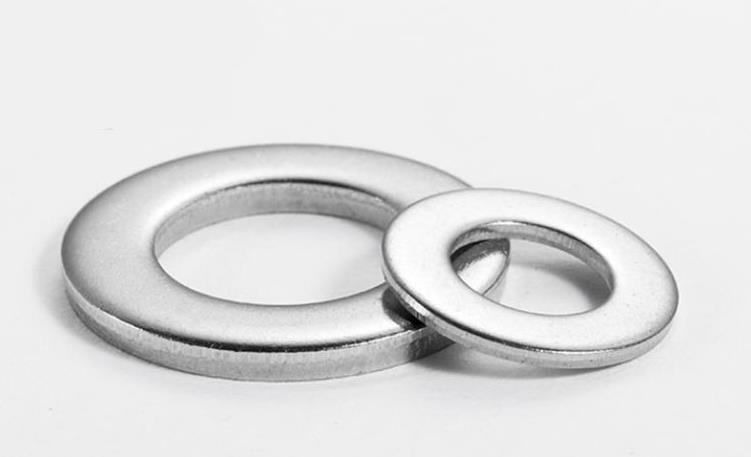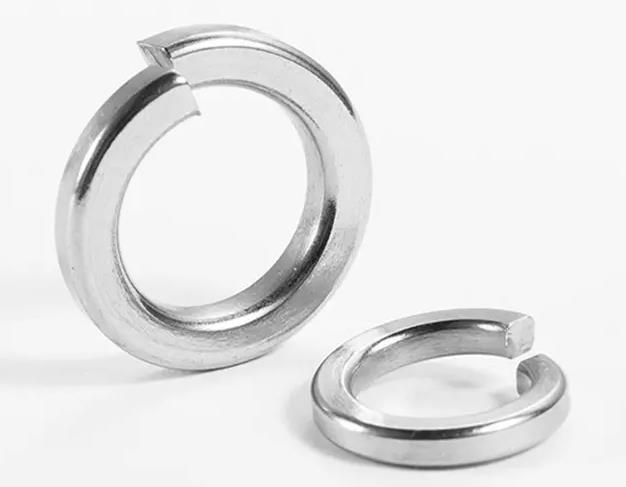Flat washers and spring washers play important roles in various hardware connections. In this article, we will explore the functions of these washers, their installation sequence, and when they should be used.
Function of Flat Washers:
Flat washers are typically made by stamping iron plates and come in round or square shapes with a hole in the center. The size of the hole is generally determined based on the bolt diameter or customer specifications.
The main functions of flat washers are as follows:
Increasing Contact Area: Flat washers increase the contact area between the machine and the screw, distributing the load more evenly.
Protecting Surfaces: They prevent damage to the machine's surface when removing screws. It is important to place the flat washer next to the machine's surface, with the spring washer between the flat washer and the nut. This setup increases the bearing surface of the screw and provides some buffer protection against stress from the spring washer.
No Anti-Vibration or Anti-Loosening Function: Flat washers do not provide anti-vibration capabilities or prevent loosening, so they need to be used carefully.
Function of Spring Washers:
Spring washers are placed under nuts to prevent them from loosening. Commonly used spring washers come in specifications such as M3, M4, M5, M6, M8, M10, M12, M14, and M16.

The main function of spring washers is:
Preventing Loosening: After tightening the nut, the spring washer applies an elastic force that presses against the nut, preventing it from easily coming off and increasing the friction between the nut and the bolt. This is especially useful in equipment with vibrations, as the spring washer ensures the nut remains secure.

Installation Sequence:
When installing washers, it is crucial to follow the correct sequence:
Flat Washer First: The flat washer should be installed before the spring washer. This is because the spring washer has sharp corners that may scratch the connector if installed first. The flat washer, being flat, will not cause any damage during rotation.
Bolt Assembly: For rigorous hardware connections, it is advisable to use a combination of bolts, spring washers, and flat washers. This ensures a secure and reliable connection, reducing the likelihood of loosening.

When to Use Flat Washers and Spring Washers:
The decision to use flat washers or spring washers depends on the specific application and load conditions. Here are some guidelines:
Flat Washers: Use flat washers when the load is relatively small, and there is no significant vibration load.
Combination of Flat Washers and Spring Washers: When dealing with larger loads or applications subjected to vibration loads, a combination of flat washers and spring washers is necessary to provide additional security and prevent loosening.
Spring Washers: Spring washers are generally not used alone but in combination with other washers for enhanced performance.
In summary, flat washers increase contact area and protect surfaces, while spring washers prevent loosening and provide preload. Understanding their functions and using them appropriately in hardware connections ensures reliable and secure fastening.









Comments (0)